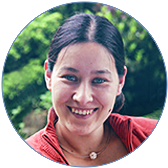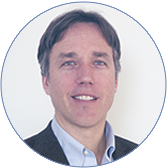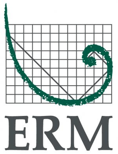PDAC 2017 Environmental & Social Responsibility Award
Sustainable consumption
Smarter use of the planet's resources
The norms of “business as usual” are ill-suited to address the economic, environmental and social challenges associated with growing middle classes. Water, food and energy are inextricably linked and also the most impacted by the growing middle classes with their increased consumption patterns. Society will need greater access to all three, as well as better management strategies, to support a growing population.
To nourish more than 9 billion people by 2050, food production will need to increase. To increase its output, the agricultural and food production sectors will also need to increase two major inputs: energy and water. Food production and agriculture will also have to compete with growing demand for water from other sources, such as industry and household use, as a result of population growth. Supplies of water have already started to run dry in certain regions.
With more agriculture there can be more pollution - especially in developing countries where sufficient controls have yet to be put in place. As a result, the build-up of nitrogen and phosphorus compounds due to the application of fertilizers can result in agricultural water pollution which then can cause damaging shifts in aquatic ecosystems, both marine and freshwater.

Supporting sustainable livelihoods
ERM has been commissioned to develop a program to support sustainable livelihoods for communities living in the watershed of a dam in West Africa. The program will address water, sanitation and health, sustainable agriculture and community-based management of the forests in the watershed. Once implemented, the program will help increase yields and income from new and existing farmland in the surrounding watershed as well as maintain or improve water quality and flow into the dam.

Through our benchmarking results, clients get a better understanding of the water impacts of their products. Looking across the product life cycle in the agricultural sector, for instance, we can trace and help quantify water use and associated risk and opportunities from growing crops to packaging food to ultimate fate. By understanding the benefits and opportunities of water management, clients are able to make more informed business decisions.
Truke Smoor, Senior Project Manager, Ceres project - Philadelphia, US

Water management for Ceres
We recently conducted extensive benchmarking of water management within the food, beverage and agriculture sectors for the sustainability nonprofit organization Ceres, a recognized thought leader in this area. ERM supported Ceres with the data research for over 40 indicators on corporate governance and management, operations and agricultural supply chain. The result will show industry trends, best practices and sector specific priorities. Ceres plans to use the results as part of an online report to be published in 2017.
Improving water management
More frequent droughts will also ramp up the pressure on the world's water resources. Rising temperatures will intensify the demand for water, with the evapotranspiration by crops and natural vegetation leading to more rapid depletion of soil moisture.
A lack of water can also result in the displacement of crops and communities. Some industries, projects and processes, for example mining or manufacturing, can have a significant impact on local water tables and therefore also food security.
Water stewardship on mine sites
The International Council on Mining and Metals (ICMM) engaged ERM to pilot implementation of "the practical guide to catchment based water management" at a key site in the Americas. ERM produced an action plan for better managing mine water stewardship and identified elements of the guidance that proved problematic, enabling further improvement for the benefits of all in the industry.
Managing future water risk
ERM is performing source vulnerability assessments (SVA) for multiple facilities in Germany of a beverage company to understand and evaluate current and forward-looking water-related issues and risks. As part of the SVA, ERM suggests water management strategies to support, to the extent possible, a sustainable supply of water to each facility’s operations. SVA is a location-specific, detailed process for identifying and assessing the socio-political, physical, environmental, regulatory and hydro-meteorological risks to water sources. It is being used by clients to improve preparation to address immediate water challenges within each site’s sphere of influence as well as to develop strategies to improve long-term water security for their businesses.

Innovative solutions to waste management
We played an active role in Wastech 2016, one of the largest events on environmental management and sustainability organized by the Indian government. As a knowledge partner for the event, ERM shared a number of innovative solutions with the 4,000 attendees, which included regulators, think tanks, industry leaders and technology providers. Our team participated in strategic panel discussion, conducted a survey on the revenue generation opportunities on waste management and released a white paper.
Improving community engagement
ERM helps clients build stronger links with the emerging middle classes in local communities. As incomes rise, peoples’ expectations change. Clients are recognizing the need for greater community engagement and social development.
Managing social impacts for a mining client in West Africa
We have been working with a mining client in West Africa to prepare for and manage the social impacts of an expected community resettlement project. Resettlement often results in significant changes to community size and dynamics and it provides an important opportunity to build physical and institutional infrastructure that will guide sustainable growth for generations to come. We work on the ground with clients from the early stages of resettlement planning to identify and manage these impacts, and to build opportunities for collaboration between clients and local stakeholders.
Teranga Gold Corporation Regional Development Plan
The Teranga Gold Corporation engaged ERM to develop a comprehensive regional development plan to maximize the long-term community benefits from the operation of a mine in south eastern Senegal, to build effective dialogue with regional stakeholders, and to better manage their social risks in so doing. The recruitment of local labor, youth education, road safety and regular communication all form part of the plan. Teranga Gold won an Environmental & Social Responsibility Award at the Prospectors & Developers Association of Canada (PDAC) 2017 International Convention, Trade Show and Investors Exchange; watch the video below in which ERM (rePlan) is mentioned.

Effective stakeholder engagement creates significant value not just for clients but also the communities adjacent to their assets. By building resilient relationships, we diffuse potential sources of conflict and expedite planning and permitting, as well as safeguard the continuous operation of key sites. Just as importantly, we identify opportunities for win-win solutions; those that achieve our client’s objectives and maximize potential benefits for their neighbors.
Graeme Burt, Partner - Toronto, Canada
Demonstrating social value
There is a greater expectation from stakeholders that business will measure and report on their efforts to deliver social value to local community and society more broadly. “The values of society are changing,” says Bryan Hartlin, Principal Consultant based in London. “Companies are increasingly looking at how they measure and evaluate financial, environmental and social value. ERM can help put the science and expert opinion behind these evaluations, taking into account their socio-economic contexts.”
Investors measuring social impacts
ERM worked with African Infrastructure Investment Managers (AIIM) in South Africa to develop a simple, fit-for-purpose, robust and scalable methodology to measure the social impacts of their Socio-economic Development and Enterprise Development Programs initiated by the renewable energy assets in the fund’s portfolio. A pilot study was undertaken on one of AIIM’s renewable projects in South Africa. The social impacts measured were mapped to the SDGs, the South African Medium Term Strategic Framework outcomes as well as the Independent Power Producer contractual obligations.
Improving social impact methodology
ERM developed a social impact measurement methodology that includes a valuation component. We have used this tool with transport, forestry and private equity clients in South Africa. This work requires strong skills in social impact measurement, stakeholder engagement and valuation expertise, along with the ability to engage with stakeholders on the ground.

There has been a sea change in industry.
Ensuring product integrity
In Brazil, ERM recently delivered an initial product stewardship and facility operating permit review for a global chemical company with products that support the Brazilian meat and dairy processing industry. We reviewed a list of several thousand products, process chemicals and raw ingredients in the product against applicable Brazilian and international standards. ERM highlighted the raw material and product quality and compliance review processes in place at the facility and also reviewed the operating permits and permit status for the Brazil facility.
This work received high praise from the client’s Vice President, Global Quality and Product Regulatory Affairs. The next task of the project, which involves site inspection and personnel interviews, is now underway. This project is a great example of cross-regional collaboration within ERM, involving product stewardship and facility EHS experts from Brazil and the United States.





